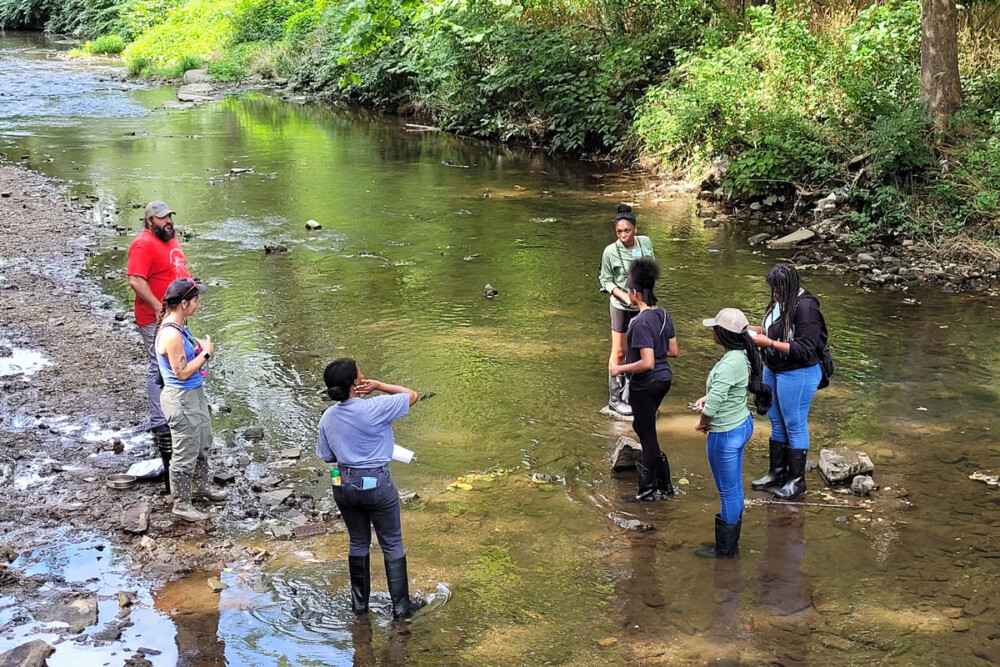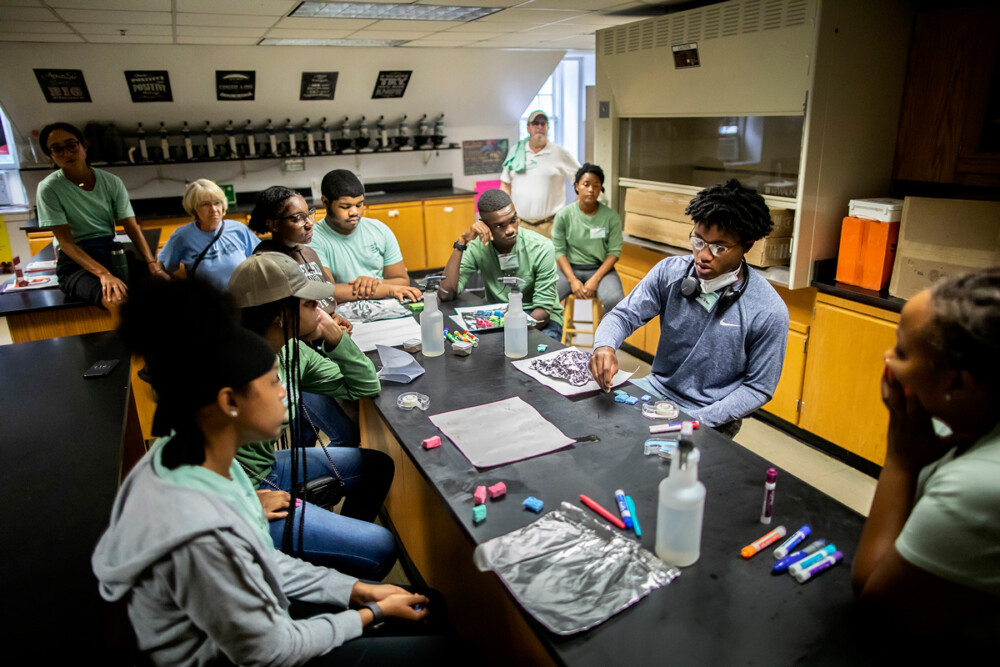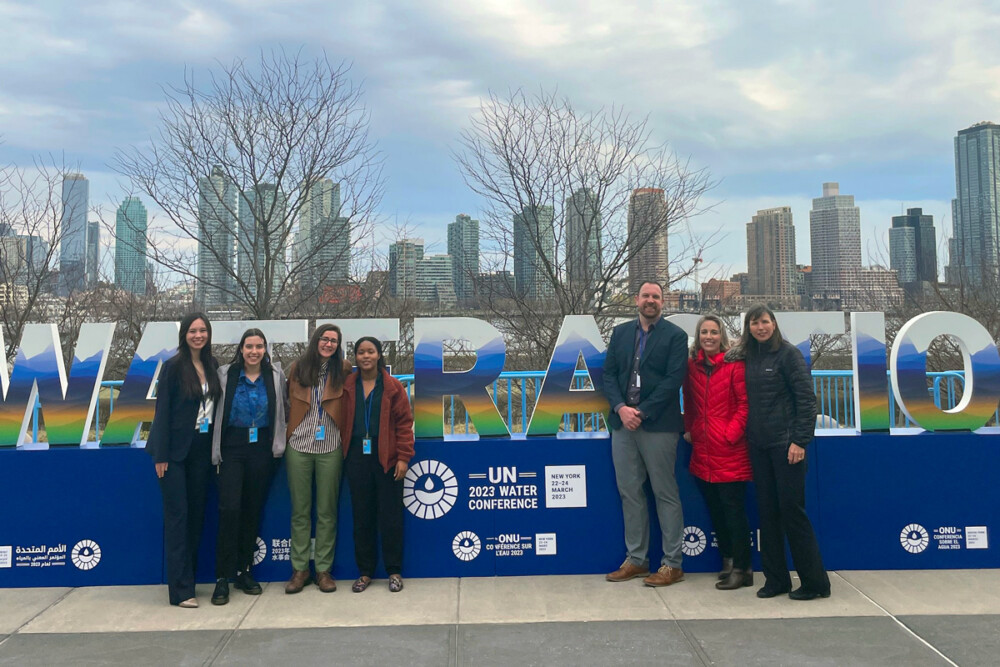
A Deep Dive into The Water Center at Penn’s 5-Year Impact
The Water Center’s three main themes, water equity, building climate resistance, and water leadership, address climate challenges.
Despite its location within the Delaware Watershed, Philadelphia is not globally known as a water hub – yet. The Water Center at Penn would like to change that.
The Water Center, which just celebrated its fifth anniversary, looks to address water challenges in Philadelphia and beyond, research climate change, and develop creative solutions to issues like stormwater management and improving resident’s quality of life.
The Center has eight research focus areas within three main themes: water equity, building community climate resistance, and water leadership. They partner with other organizations around the city within these efforts, like partnering with Cobbs Creek Community Environmental Center (CCEC) to help build trust within West Philadelphia.
“We do have five words that we’re focusing on: community, resilience, sustainability, science, and equity,” said Howard Neukrug, Executive Director of The Water Center. “Take all the policies and ideas and progressive movements happening in, particularly urban centers, around the country, and how does water utility fit into all that? How does the water business fit into all that?”
Here are a few projects the Center is working on that address some of the biggest water-related needs faced by our city.
The future of water research
Last month, the Water Center accepted members for new cohorts where, as Neukrug described, diverse groups from different parts of the water world can come together and learn about leadership, the water business, and innovation.
“The most important thing to me is that these young people meet each other, understand that they’re all coming from different perspectives on water, and that the only way we can solve our problems is if we all work together,” said Neukrug. “[We] hope that they move ahead and continue to work together and support each other in becoming the next generation of leaders. That’s really driving a lot of what we do.”

Photo credit: Eric Sucar, University of Pennsylvania Communications
Decades-old dilemma: Philly’s aging sewage system’s impact on stormwater
Philadelphia has long struggled to deal with the aftermath of storms — and the combination of rainwater and sewage. Big storms overrun the city’s combined sewer system, causing stormwater and raw sewage to overflow pipes that lead into the city’s rivers and streams. This is due to the city’s decades-old sewage system, which, according to The Philadelphia Inquirer, was designed to overflow into the Delaware and Schuylkill Rivers. But with climate change causing more intense rainfalls and more humid, wet air, the system cannot handle the storms.
“How do you change the grade and the city so the rainwater is being reused, recycled, managed, slowed down, whatever you can do to divert the water from the sewer? Once the rainwater hits the sewer, it becomes a waste product, which costs a lot of money to pump and treat, and then you return it to the river,” said Neukrug.
This is not a problem that only Philadelphia faces, but it makes it a great place to try solutions. One solution? Green stormwater infrastructure tools like planting trees help store the rainwater in the ground.
Rain gardens and bioswales (vegetated ditches) were also added. The Philadelphia Water Department requires any new building to “integrate robust and cost-effective stormwater management into site designs in ways that achieve the Philadelphia Water Department’s (PWD’s) key stormwater management goals of minimizing the harmful effects of flooding and maintaining the health of Philadelphia’s streams and rivers.”
The Water Center has helped in this effort from various organizations, including the Pennsylvania Environmental Council. Paul Racette, Senior Program Manager of Watersheds at PEC, advises Philadelphians to join the effort.
Philadelphia communities can support PWD efforts, including financial incentives with stormwater grants, to install green and grey stormwater infrastructure in neighborhoods to soak up and slow stormwater runoff. “This is particularly important in the combined sewer areas of the city where excess runoff can cause combined sewer overflows, said Racette. Philadelphia’s Green City Clean Water 25-year initiative began in 2011 and is scheduled to meet pollution reduction goals by 2036.
Breaking the Stigma: Transforming Perceptions of Tap Water in Philadelphia
40% of city residents drink bottled water at home, according to a 2021 study by Penn and the Philadelphia Water Department.
People most likely to buy bottled water are the people who are the least likely to be able to afford it, according to research conducted by the Water Center. The Water Center is part of Drink Philly Tap, a partnership of various organizations urging Philly to drink the water from their sink.

A Tapestry of Water-Centric Community Group
The Water Center isn’t the only water group in our city, and that’s a good thing. Though each organization focuses on a slightly different realm, they all have a similar goal: educating the community on why they should care about water.
“There is an ecosystem of non-profit and governmental organizations in Philadelphia addressing clean water and healthy watershed resources,” said Racette. “While there is overlap, each organization has a specific niche, including by geography or work focus area (education, research, legal action, project development, monitoring, community engagement, policy advocacy, and more).”
“Progress is being made in restoring water quality and watershed health in our very urbanized area, but much more needs to be done. Partnership collaborations are essential,” Racette emphasized.
Jerome Shabazz, the Executive Director of The Overbrook Environmental Education Center, believes it’s important to have multiple organizations with different approaches to sustainability working towards similar goals in Philadelphia.
“You need diversity in the approach because people are different, and the communities are different,” he said. “We always say here at Overbrook; we don’t try to out-academic, the academic.”
Shabazz addressed the collective result of these factors. “Environmentalism is very local. And we need to be more aware of how the intersectionality of the environment, health, and community is dictating the quality of our life in the city. And every time we have an environmental disparity, one of those factors is going to affect our health and our quality of life.”
According to Shabazz, the biggest way to create a culture of caring is to work directly with people in the neighborhood, no matter what type of organization you are, the city itself, a nonprofit, or an academic center.
“All of them have to have the capacity to co-produce results with the benefit of community input,” he said.
Neukrug agrees.
“Our future is to have people from the community being the ones who are responsible for the water issues and climate change issues. Everything we do is leading towards that.”
Cover photo: Water Center at Penn








